A police dash-cam catches a fireball lighting up the sky in the south of Iceland
Translation of article:
The police in Selfoss caught these weird lights in the sky on tape
shortly after midnight last night. The officers were going east during
a routine highway patrol on Eyrarbakka-road when they noticed a
spectacular flare which to them seemed to be heading to the river
Ölfusá. Speculations are that this was a meteorite entering the
atmosphere.
Many saw the flare and notified the police, and the
flare was seen all around the south of Iceland and in Akranes. It is
believed impossible to have been an emergency flare.
The sheriff in Selfoss says there has not been any aftermath
to his knowledge, and no unusal visitors have been seen that could
possibly have fallen from the sky.
Science Daily
Sat, 03 Oct 2009 19:55 EDT

An
artist's rendering of the asteroid impact that took place 65 million
years ago and likely killed off nearly every large vertebrate species
on the planet, including, many think, the dinosaurs.
In
1980, Luis Alvarez and his collaborators stunned the world with their
discovery that an asteroid impact 65 million years ago probably killed
off the dinosaurs and much of the the world's living organisms. But
ever since, there has been an ongoing debate about how long it took for
life to return to the devastated planet and for ecosystems to bounce
back.
Now, researchers from MIT and their collaborators have found
that at least some forms of microscopic marine life - the so called
"primary producers," or photosynthetic organisms such as algae and
cyanobacteria in the ocean - recovered within about a century after the
mass extinction. Previous research had indicated the process might have
taken millions of years.
It has taken so long to uncover the quick recovery because
previous studies looked mostly at fossils in the layers of sediment
from that period, and apparently the initial recovery was dominated by
tiny, soft-bodied organisms such as cyanobacteria, which do not have
shells or other hard body parts that leave fossil traces. The new
research looked instead for "chemical fossils" - traces of organic
molecules (compounds composed of mostly carbon and hydrogen) that can
reveal the presence of specific types of organisms, even though all
other parts of the organisms themselves are long gone.
The new research, published in the Oct. 2 issue of Science,
was led by Julio Sepúlveda, an MIT postdoc who carried out part of the
work while still a graduate student at the University of Bremen,
Germany, and MIT Professor of Geobiology Roger Summons, among others.
The team had two major advantages that helped to make the new
findings possible. One was a section of the well-known cliff face at
Stevns Klint, Denmark, that happens to have an unusually thick layer of
sediment from the period of the mass extinction - about 40 centimeters
thick, compared to the few cm thickness of the layers that Alvarez
originally studied from that period at Gubbio (Italy) and Stevns Klint
(Denmark). And team members tapped one of the most powerful Gas
Chromatograph-Mass Spectrometers (GC-MS) in the world, a device that
can measure minute quantities of different molecules in the rock. MIT's
advanced GC-MS is one of only a few such powerful instruments currently
available at U.S. universities.
When people look at microfossils in the sediments from the
period but are unable to detect the chemical biomarkers with the level
of sensitivity the MIT team was able to achieve, they "miss a big part
of the picture," Sepúlveda says. "Many of these microorganisms" that
were detected through molecular signatures "are at the base of the food
chain, but if you don't look with biochemical techniques you miss
them."
The analysis clarified the sequence of events after the big
impact. Immediately after the impact, certain areas of the ocean were
devoid of oxygen and hostile to most algae, but close to the continent,
microbial life was inhibited for only a relatively short period: in
probably less than 100 years, algal productivity showed the first signs
of recovery. In the open ocean, however, this recovery took much
longer: previous studies have estimated that the global ocean ecosystem
did not return to its former state until 1 to 3 million years following
the impact.
Because of the rebound of primary producers, Sepúlveda says
"very soon after the impact, the food supply was not likely a
limitation" for other organisms, and yet "the whole ecology of the
system remained disrupted" and took much longer to recover.
The findings provide observational evidence supporting models
suggesting that global darkness after the impact was rather short.
"Primary productivity came back quickly, at least in the environment we
were studying," says Summons, referring to the near-shore environment
represented by the Danish sediments.
"The atmosphere must have cleared up rapidly," he says.
"People will have to rethink the recovery of the ecosystems. It can't
be just the lack of food supply" that made it take so long to recover.
The team hopes to be able to study other locations with
relatively thick deposits from the extinction aftermath, to determine
whether the quick recovery really was a widespread phenomenon after the
mass extinction.
These findings seem to rule out one theory about how the
global ecosystem responded to the impact, which held that for more than
a million years there was a "Strangelove ocean" - a reference to the
post-apocalyptic scenario in the movie Dr. Strangelove - in which all the primary producers remained absent for a prolonged period, Summons says.
In addition to Sepúlveda and Summons, the work was carried out by Jens
Wendler of the Friedrich-Schiller University in Jena, Germany, and
Kai-Uwe Hinrichs of the University of Bremen. The work was funded by
the DFG, European Graduate College Europrox and the NASA Astrobiology
and Exobiology Programs.
Journal reference:
1. Julio Sepúlveda, Jens E. Wendler, Roger E. Summons, and
Kai-Uwe Hinrichs. Rapid Resurgence of Marine Productivity After the
Cretaceous-Paleogene Mass Extinction. Science, 2009; DOI: link
Associated Press / Boston.com
Wed, 07 Oct 2009 20:20 EDT
Buenos Aires, Argentina - Pedro Elias Zadunaisky, an Argentine
astronomer and mathematician whose calculations helped determine the
orbit of Saturn's outermost moon, Phoebe, as well as Halley's Comet,
died Wednesday. He was 91.
Zadunaisky was a pioneer in celestial mechanics, applying
mathematical models to determine how gravity and other forces alter the
orbits of other objects in the solar system.
Zadunaisky also was a Senior Astronomer at the Smithsonian
Astrophysical Observatory and in the 1960s researched the orbits of
celestial bodies at NASA's Goddard Space Flight Center, calculating the
orbits of the first U.S. Earth satellite, Explorer I, as well as other
satellites during the U.S. space race against Russia.
Born in the Argentine city of Rosario on Dec. 10, 1917,
Zadunaisky earned a civil engineering degree at the National University
of Rosario, then pursued applied mathematics and specialized in
celestial mechanics. He earned three Guggenheim fellowships for
research at Columbia University in 1957, Princeton University in 1958
and at the University of Texas at Austin in 1977.
Zadunaisky left Argentina in 1966 along with many
other professors and scientists after a crackdown on university
protests against a military coup known as "the night of the long
clubs."
Zadunaisky soon returned, and eventually taught at both the
University of Buenos Aires and the National University of La Plata. He
also directed astrodynamical investigations at Argentina's National
Commission on Space Activity.
In 2000, an asteroid discovered by a team of his former students was named 4617 Zadunaisky in his honor.
His research was published in more than 40 publications worldwide, including the text book A Guide to Celestial Mechanics, edited by the Harvard Smithsonian Center for Astrophysics.
John Matson
Scientific American
Thu, 01 Oct 2009 00:01 EDT
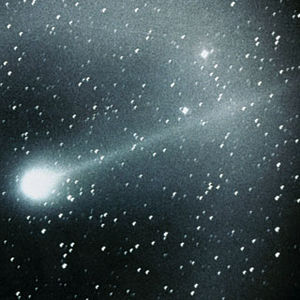
Cometary
commotion: A new mechanism for how icy bodies get past Jupiter and
Saturn suggests that comet showers did not play a big role in Earth's
extinctions.
A new model for comet production revises the theory of their origins
The chunks of ice and dust that make their home in the Oort cloud, far
beyond the orbit of Pluto, sometimes become dislodged and head into the
solar system as streaky comets. Some disruptions, caused by passing
stars and other interactions with the Milky Way galaxy, are severe
enough to send Oort comets into orbits that buzz or even collide with
Earth. New simulations have revealed a novel mechanism for their entry
into our part of the solar system, a method that also suggests that
comet showers may not have been strongly involved in major extinctions
on Earth.
Comet dynamics depend heavily on Jupiter and Saturn: their
huge gravitational fields tend to keep objects away from Earth. Comets
that manage to skirt Jupiter and Saturn, the conventional thinking
goes, had to have originated in the outer reaches of the Oort cloud,
where perturbations from outside the solar system can be felt most
strongly and are writ large across vast cometary orbits that take
hundreds of years to complete. Only during comet showers caused by
close stellar passages, the theory holds, have extreme gravitational
disruptions brought inner Oort cloud comets into the mix.
A computer simulation by Nathan Kaib and Thomas Quinn,
both at the University of Washington, have upended this thinking. They
have found that the comets that manage to cross the Jupiter-Saturn
barrier do in fact originate in large numbers in the inner Oort cloud,
even in the absence of a large disruption causing a comet shower.
Specifically, they found that the relatively nearby objects of the
inner Oort cloud can be kicked into the reaches of the outer cloud via
interactions with the massive planets. Those newly far-flung comets,
suddenly enjoying a longer orbit and greater gravitational
perturbations from interstellar space, can find their orbits so changed
that, by the time they pass through the planetary region again, they
slip past the gas giants. "They can basically hop over the
Jupiter-Saturn barrier," Kaib says.
Kaib and Quinn estimate that more than half of the comets we
observe streaking in from the Oort cloud reach our neighborhood via
this route, and other researchers agree the simulation appears valid.
"This mechanism, this dynamical path, as we call it, could work and
could be a significant contributor," says Paul Weissman, a senior
research scientist at the NASA Jet Propulsion Laboratory.
The new research presents a route for comet production "that
goes some way" toward resolving discrepancies between the standard
model and the observations, says Scott Tremaine, an astrophysicist at
the Institute for Advanced Study in Princeton, N.J. "One of the issues
is that [the conventional view of] the cometary formation process is so
inefficient; in order to produce the number of comets that we see,
you'd need a really massive protoplanetary disk, one that appears to be
incompatible with our best estimates from other sources," Tremaine
says.
Kaib and Quinn used their newfound mechanism, as well as the
number of observed comets, to estimate an upper limit on how much
material could be in the inner Oort cloud. They then produced a
statistical model of how many comets would have hit Earth in comet
showers in the past several hundred million years. Their conclusion:
large cometary showers were few and hence probably did not cause more
than one extinction event.
Using cometary dynamics to unwind the extinction history on
Earth will likely meet with some controversy. Weissman notes that the
extinction implications of Kaib and Quinn's analysis would involve
comet showers, not comets in general, and that even a diminished
profile of showers does not rule out the role of comets in extinctions.
One big strike, rather than a shower of small ones, is all that's
needed to trigger extinctions, he points out.
Jet Propulsion Laboratory
Mon, 12 Oct 2009 19:52 EDT
Pasadena,
California -- Using updated information, NASA scientists have
recalculated the path of a large asteroid. The refined path indicates a
significantly reduced likelihood of a hazardous encounter with Earth in
2036.
The Apophis asteroid is approximately the size of
two-and-a-half football fields. The new data were documented by
near-Earth object scientists Steve Chesley and Paul Chodas at NASA's
Jet Propulsion Laboratory in Pasadena, Calif. They will present their
updated findings at a meeting of the American Astronomical Society's
Division for Planetary Sciences in Puerto Rico on Oct. 8.
"Apophis has been one of those celestial bodies that
has captured the public's interest since it was discovered in 2004,"
said Chesley. "Updated computational techniques and newly available
data indicate the probability of an Earth encounter on April 13, 2036,
for Apophis has dropped from one-in-45,000 to about four-in-a million."
A majority of the data that enabled the updated orbit of
Apophis came from observations Dave Tholen and collaborators at the
University of Hawaii's Institute for Astronomy in Manoa made. Tholen
pored over hundreds of previously unreleased images of the night sky
made with the University of Hawaii's 2.2-meter (88-inch) telescope,
located near the summit of Mauna Kea.
Tholen made improved measurements of the asteroid's position
in the images, enabling him to provide Chesley and Chodas with new data
sets more precise than previous measures for Apophis. Measurements from
the Steward Observatory's 2.3 meter (90-inch) Bok telescope on Kitt
Peak in Arizona and the Arecibo Observatory on the island of Puerto
Rico also were used in Chesley's calculations.
The information provided a more accurate glimpse of Apophis'
orbit well into the latter part of this century. Among the findings is
another close encounter by the asteroid with Earth in 2068 with chance
of impact currently at approximately three-in-a-million. As with
earlier orbital estimates where Earth impacts in 2029 and 2036 could
not initially be ruled out due to the need for additional data, it is
expected that the 2068 encounter will diminish in probability as more
information about Apophis is acquired.
Initially, Apophis was thought to have a 2.7 percent chance of
impacting Earth in 2029. Additional observations of the asteroid ruled
out any possibility of an impact in 2029. However, the asteroid is
expected to make a record-setting -- but harmless -- close approach to
Earth on Friday, April 13, 2029, when it comes no closer than 29,450
kilometers (18,300 miles) above Earth's surface.
"The refined orbital determination further reinforces that
Apophis is an asteroid we can look to as an opportunity for exciting
science and not something that should be feared," said Don Yeomans,
manager of the Near-Earth Object Program Office at JPL. "The public can
follow along as we continue to study Apophis and other near-Earth
objects by visiting us on our AsteroidWatch Web site and by following
us on the @AsteroidWatch Twitter feed."
The science of predicting asteroid orbits is based on a
physical model of the solar system which includes the gravitational
influence of the sun, moon, other planets and the three largest
asteroids.
NASA detects and tracks asteroids and comets passing close to
Earth using both ground and space-based telescopes. The Near-Earth
Object Observations Program, commonly called "Spaceguard," discovers
these objects, characterizes a subset of them and plots their orbits to
determine if any could be potentially hazardous to our planet.
JPL manages the Near-Earth Object Program Office for NASA's
Science Mission Directorate in Washington. JPL is a division of the
California Institute of Technology in Pasadena. Cornell University,
Ithaca, N.Y., operates the Arecibo Observatory under a cooperative
agreement with the National Science Foundation in Arlington, Va.
A New Mexico astronomer is hoping you can help solve a mystery.
He caught a spectacular fireball on video and he said you can help him track down what's left of it.
Thomas Ashcraft caught a cosmic fireball on camera. It flashed through
the sky for about eight seconds just after 2 Friday morning.
"Probably originating in the vicinity of Taos, and
then streaking across the sky to Wagon Mound or Springer area," said
Ashcraft.
Ashcraft works in a lab the size of a small barn. He bought or
built most of the electronics himself, except for a special camera on
loan from Sandia Labs.
The camera looks like a parking lot surveillance camera except it's parking lot is the sky.
"Actually up to Denver, into Utah, into southwest Kansas, and northern Mexico," said Ashcraft.
The camera runs from dusk to dawn recording everything that
flashes through the heavens. It's synched to a radio telescope that
records the sound of the objects shredding the ionosphere.
"Maybe somebody recorded this on surveillance camera. So if
there's other videos, then we might be able to triangulate and see if
there's a meteorite that landed somewhere," said Ashcraft.
Thomas says that this fireball was created by something about
the size of a filing cabinet, but he can spot something as small as
this bolt burning through the atmosphere.
ScienceDaily
Tue, 13 Oct 2009 12:40 EDT
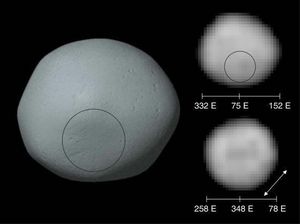
Pallas's
largest crater-like feature seen in the digital model (left) and from
two perspectives: appearing face-on (upper right) and edge-on along the
limb (lower right).
Britney E. Schmidt, a UCLA
doctoral student in the department of Earth and space sciences, wasn't
sure what she'd glean from images of the asteroid Pallas taken by the
Hubble Space Telescope. But she hoped to settle at least one burning
question: Was Pallas, the second-largest asteroid, actually in that
gray area between an asteroid and a small planet?
The answer, she found, was yes. Pallas, like its sister asteroids Ceres and Vesta, was that rare thing: an intact protoplanet.
"It was incredibly exciting to have this new perspective on an
object that is really interesting and hadn't been observed by Hubble at
high resolution," Schmidt said of the first high-resolution images of
Pallas, which is believed to have been intact since its formation, most
likely within a few million years of the birth of our solar system.
"We were trying to understand not only the object, but how the
solar system formed," Schmidt said. "We think of these large asteroids
not only as the building blocks of planets but as a chance to look at
planet formation frozen in time."
The research appears Oct. 9 in the journal Science.
"To have the chance to use Hubble at all, and to see those images come
back and understand automatically this could change what we think about
this object - that was incredibly exciting to me," Schmidt said.
Pallas, which is named for the Greek goddess Pallas Athena,
lies in the main asteroid belt between the orbits of Jupiter and Mars.
Schmidt likens it to the size of Arizona, her home state. The massive
body is unique, she said, partly because "its orbit is so much
different from other asteroids. It's highly inclined."
Hubble had tried to snap pictures of the round-shaped body
before but came up short. So when the space telescope took images again
in September 2007, Schmidt and her colleagues had several goals.
"We wanted to learn about Pallas itself - what its shape is
like, what its surface is like, does it have large impact craters, does
it have significant topography," she said.
With the Hubble images, Schmidt and her colleagues were able
to take new measurements of Pallas' size and shape. They were able to
see that its surface has areas of dark and light, indicating that the
water-rich body might have undergone an internal change in the same way
planets do.
Pallas wasn't just a big rock made of hydrated silicate and ice, they found.
"That's what makes it more like a planet - the color variation
and the round shape are very important as far as understanding, is this
a dynamic object or has it been exactly the same since it's been
formed?" Schmidt said. "We think it's probably a dynamic object."
For the first time, Schmidt and her colleagues also saw a
large impact site on Pallas. They were unable to determine if it was a
crater, but the depression did suggest something else important: that
it could have led to Pallas' small family of asteroids orbiting in
space.
"It's interesting, because there are very few large, intact
asteroids left," Schmidt said. "There were probably many more. Most
have been broken up completely. It's an interesting chance to almost
look into the object, at the layer underneath. It's helping to unravel
one of the big questions that we have about Pallas, why does it have
this family?"
Schmidt's co-authors include Peter C. Thomas, a senior
researcher at Cornell University; James Bauer, a researcher with the
Jet Propulsion Laboratory; J.Y. Li, a postdoctoral student at the
University of Maryland; Schmidt's Ph.D. adviser, UCLA professor of
geophysics and space physics Christopher T. Russell; Andrew Rivkin, a
researcher at Johns Hopkins University; Joel William Parker, a
researcher at the Southwest Research Institute in Boulder, Colorado;
Lucy McFadden, a faculty member at the University of Maryland; S. Alan
Stern of the Southwest Research Institute; Max Mutchler, a researcher
at the Space Telescope Sciences Institute; and Chris Radcliffe, a
digital artist in Santa Monica.
"When people think of asteroids, they think of 'Star Wars' or
of tiny little rocks floating through space," Schmidt said. "But some
of these have been really physically dynamic. Around 5 million years
after the formation of the solar system, Pallas was probably doing
something kind of interesting."
Asteroid isn't just a dry heap of rubble
Rachel Courtland
New Scientist
Mon, 12 Oct 2009 14:29 EDT
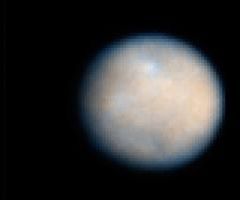
The
largest asteroid, Ceres (shown), appears to contain a lot of water ice
beneath its surface. Now ice has been detected on the surface of the
asteroid 24 Themis, which lies about three times as far from the sun as
Earth does.
Two independent teams have found what may
be the first direct evidence of water ice on the surface of an
asteroid. The discovery lends support to the idea that asteroids could
have helped deliver water to the early Earth.
Asteroids are generally considered to be rocky, and comets
icy. That's because ice in the early solar system is thought to have
formed beyond a "snow line" lying somewhere between Mars and Jupiter.
Asteroids forming beyond that boundary could contain ice.
But it is not clear how common ice might be in the main
asteroid belt, because sunlight is expected to quickly vaporise ice on
the surfaces of airless bodies that fly closer to the sun than Jupiter.
In 2008, however, Andrew Rivkin of Johns Hopkins University in
Laurel, Maryland, and Joshua Emery of the SETI Institute in Mountain
View, California, found hints that the asteroid 24 Themis, which sits
in the main asteroid belt between Mars and Jupiter, could have water
ice on its surface. The team found the water signal by measuring the
spectrum of infrared light radiated by the object.
Now a second team has found the water ice signature using the same telescope, NASA's Infrared Telescope Facility in Hawaii.
The new observations suggest water ice, mixed with organic
molecules, is "widespread on the surface of the asteroid", Humberto
Campins of the University of Central Florida in Orlando reported at a
meeting of the American Astronomical Society's Division of Planetary
Sciences in Fajardo, Puerto Rico, last week.
Icy parent
That is surprising, since the asteroid's distance from the sun means it
should lose about 1 metre of ice each year. "This ice is unstable, and
therefore we need a process to explain why there is ice on the surface
now," Campins said at the meeting.
One possiblity is that an icy object might have collided with
24 Themis, leaving behind a layer of ice. Alternatively, the ice could
have been part of the asteroid's parent body, which is thought to have
broken up about 2.5 billion years ago, producing a family of asteroids
with orbits similar to that of 24 Themis.
In that case, the ice seen on the surface now would once have
been buried beneath dust and rock that insulated it from the sun's heat
and prevented it from escaping into space. Impacts could then have
churned the surface to expose the ice.
Watery hints
Until now, the possibility of present-day water ice on
asteroids has only been hinted at. The density of the mammoth main-belt
asteroid Ceres suggests it contains a large amount of water ice, but no
clear-cut sign of ice has been found on its surface.
"This Themis result is really nice because it's been confirmed
by two independent groups," says Henry Hsieh of Queen's University
Belfast in the UK, though he notes that the spectral evidence for ice
may not be entirely water-tight.
"It's a messy region [of the spectrum] that's hard to
observe," says Clark Chapman of Southwest Research Institute in
Boulder, Colorado. "In some sense, it's a matter of judgment whether
it's a hint of water ice or an almost certain detection or somewhere in
between."
Still, Chapman says, he would not be surprised to see water
ice on asteroids, adding that the distinction between comets,
traditionally considered to be icy, and asteroids, which have been
largely thought of as rocky, is becoming increasingly blurred.
Comet tails
In recent years, Hsieh and others have discovered a handful of
main-belt asteroids with comet-like tails that could be created by
sublimating ice.
These so-called "main-belt comets" are too distant and faint
for astronomers to scan their spectra for signs of water ice. Two of
the four detected so far are part of the same family of asteroids as 24
Themis, which is the family's largest member.
"What is most likely the case is that the parent body [of this
family] was water-ice-rich, was broken up, and now the surface of its
largest fragment, Themis, has been impact-excavated, revealing the ice
that was once deep in a larger object," says Britney Schmidt of UCLA,
who was not affiliated with Campins's study. "It is exciting to finally
get a glimpse inside a water-rich body."
Mismatched isotopes
David Jewitt of UCLA, co-discoverer of the first main-belt
comets, agrees. "These objects may hold ice and preserve a record of
conditions at formation between the orbits of Mars and Jupiter," he
told New Scientist.
The detection could also go a long way towards explaining how the Earth
got its water. Soon after the solar system's formation, the sun's heat
is thought to have broken apart most water molecules that lay close to
the sun.
Comets, which formed far from the sun, have been proposed as
an alternate way of delivering water to the Earth, but the relative
amounts of different isotopes of hydrogen in the water on comets do not
match up with Earth's. "If there was water in the asteroids, it could
be enough to fill the oceans," Hsieh says.
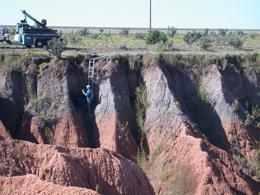
Sediments
at the San Jon site, in eastern New Mexico, contained very low
abundances of magnetic spherules said to be evidence of an impact.
No evidence of an extraterrestrial impact 13,000 years ago, studies say.
An independent study has cast more doubt on a controversial theory that
a comet exploded over icy North America nearly 13,000 years ago, wiping
out the Clovis people and many of the continent's large animals.
Archaeologists have examined sediments at seven Clovis-age
sites across the United States, and did not find enough magnetic cosmic
debris to confirm that an extraterrestrial impact happened at that
time, says the report in the Proceedings of the National Academy of Sciences (PNAS). It is the latest of several studies unable to support aspects of the impact hypothesis.
In 2007, a team led by Californian researchers announced a theory
that a comet or asteroid had exploded over the North American ice
sheet, creating widespread fire and an atmospheric soot burst followed
by a cooling period known as the Younger Dryas.
Sometime after this, the Clovis people, sophisticated large-animal
hunters known for their spear points, mysteriously disappeared; the
team linked their vanishing to the environmental effects of the
proposed impact.
Key evidence came in the form of magnetic
microspherules discovered in sediments at 25 locations, including eight
Clovis-age sites. Richard Firestone, of Lawrence Berkeley National
Laboratory in California, and his colleagues argued that the
microspherules were remnants of cosmic debris from an explosion.
But in more than 18 months of sedimentary analysis, a team led
by Todd Surovell, an archaeologist at the University of Wyoming in
Laramie, was unable to detect microspherule peaks. Two of the seven sites the group studied were places where Firestone's team identified spherule peaks.
"I spent hundreds of hours at the microscope examining sediment
samples," says Surovell, "and I didn't find any physical evidence to
support their theory."
Standing firm
The other team isn't backing down. "Their study doesn't negate
our hypothesis," says James Kennett, a palaeoceanographer at the
University of California at Santa Barbara and one of Firestone's
co-authors. Another co-author, avocational geophysicist Allen West of
Prescott, Arizona, says that Surovell's group didn't use the correct
technique to extract, identify and quantify the microspherules.
Several other groups have been unable to support important aspects of the comet theory.
In a PNAS article published
in February, Jennifer Marlon, a doctoral geography student at the
University of Oregon in Eugene, and her colleagues found no systematic
burning of biomass - as would have occurred if continent-wide fires had
happened - at the time of the Younger Dryas in pollen and charcoal
records at 35 sites. And at the Ecological Society of America meeting
in Albuquerque, New Mexico, in August, Jacquelyn Gill, a palaeoecology
doctoral student at the University of Wisconsin-Madison, reported finding no evidence of massive burning in sediment cores taken from lake beds in Ohio and Indiana.
Kennett, however, calls these studies "flawed".
In August, his team published a report saying they had found
nanometre-sized diamonds, purportedly created during an impact, and
soot in sediments dated to the Younger Dryas on Santa Rosa Island, off
the coast of California.
More studies of the theory - both critical and supportive - are in the publishing pipelines at other journals.
Surovell's co-author Vance Holliday, an archaeologist at the
University of Arizona in Tucson, and his colleagues have an article in
press at Current Anthropology
that says the archaeological and geochronological records don't support
a collapse of Clovis people at the time of the purported impact.
Comment: For a more in-depth view, read: The Younger Dryas Impact Event and the Cycles of Cosmic Catastrophes - Climate Scientists Awakening
There
have been numerous theories proposed about what struck the taiga in
central Siberia, causing millions of trees to topple over and many
still-standing trees to lose all their branches. Many expeditions have
looked for traces of what hit Earth and have not found much. There is
no telltale meteor crater, and no clear evidence of a nuclear blast. In
fact, at the epicenter, the trees were found to be still standing.
Whatever hit Earth did not reach the ground. It exploded in the air
above the ground.
In The Tunguska Mystery by Vladimir Rubtsov, the
efforts put forth by generations of Russian scientists, technicians,
and others are documented. What did they find? Was it a meteorite, as
had first been thought? Was it an asteroid? Was it a comet? Some
support the idea that this was not a "natural" event at all but one
caused by the explosion of an alien spaceship trying to land on Earth.
Is there any evidence for this? How did the Russian scientific and
world community react to this theory?
The mystery has been very difficult to solve, but it is
important - perhaps even urgent - to solve it. We live in a very
violent universe, and we are extremely vulnerable to its vagaries. How
can we prevent another "Tunguska" if we don't even know what it was?
And next time, the event might not occur in a remote, barely inhabited
region of Earth. It may take many thousands of lives and destroy whole
cities.
Vladimir Rubtsov was born in 1948 in Kharkov, Ukraine.
He received his Ph.D. degree in the Philosophy of Science from the
Institute of Philosophy of the Academy of Sciences of the USSR, having
defended in 1980 the doctoral thesis: "Philosophical and Methodological
Aspects of the Problem of Extraterrestrial Civilizations," the first of
its kind in the former USSR. Dr. Rubtsov has authored two monographs
and some 120 scientific and popular science articles in the Soviet,
post-Soviet and international press.
Thaindian News
Tue, 13 Oct 2009 14:32 EDT
Two independent scientific teams have found what may be the first
direct evidence of water ice on the surface of an asteroid, a discovery
that lends support to the idea that asteroids could have helped deliver
water to the early Earth.
Asteroids are generally considered to be rocky, and comets
icy. That's because ice in the early solar system is thought to have
formed beyond a "snow line" lying somewhere between Mars and Jupiter.
Asteroids forming beyond that boundary could contain ice.
But, it is not clear how common ice might be in the main
asteroid belt, because sunlight is expected to quickly vaporise ice on
the surfaces of airless bodies that fly closer to the sun than Jupiter.
In 2008, however, Andrew Rivkin of Johns Hopkins University in
Laurel, Maryland, and Joshua Emery of the SETI Institute in Mountain
View, California, found hints that the asteroid 24 Themis, which sits
in the main asteroid belt between Mars and Jupiter, could have water
ice on its surface.
The team found the water signal by measuring the spectrum of infrared light radiated by the object.
Now, according to a report in New Scientist, a second team has found the water ice signature using the same telescope, NASA's Infrared Telescope Facility in Hawaii.
The new observations suggest water ice, mixed with organic molecules,
is "widespread on the surface of the asteroid," said Humberto Campins
of the University of Central Florida in Orlando.
That is surprising, since the asteroid's distance from the sun means it should lose about 1 metre of ice each year.
"This ice is unstable, and therefore we need a process to explain why there is ice on the surface now," said Campins.
One possibility is that an icy object might have collided with 24 Themis, leaving behind a layer of ice.
Alternatively, the ice could have been part of the asteroid's
parent body, which is thought to have broken up about 2.5 billion years
ago, producing a family of asteroids with orbits similar to that of 24
Themis.
"What is most likely the case is that the parent body (of this
family) was water-ice-rich, was broken up, and now the surface of its
largest fragment, Themis, has been impact-excavated, revealing the ice
that was once deep in a larger object," said Britney Schmidt of UCLA.
"It is exciting to finally get a glimpse inside a water-rich body," she added.
Two polar scientists hot on the trail of an arctic mystery have a new
tool for exploration: a hovercraft, specially outfitted for week-long
trips over the ice with scientific instruments and solar panels.
Their
quarry is a nearly 22,000 square-mile patch of disturbed Arctic sea
floor that could be evidence of a massive asteroid strike. John Hall, a
now-retired geoscientist, discovered the anomaly during his late-'60s
graduate work aboard Fletcher's Ice Island, a huge berg U.S. scientists
inhabited for several decades.
Since then, no scientific vessel has been back over the area
to collect more data. The massive icebreakers that have crunched
through the Arctic since the 1990s can't reach the spot, said Yngve
Kristofferson, a scientist and explorer at the University of Bergen in
Norway.
Kristofferson became intrigued with Hall's data and in 2004,
the two of them met in Bergen to talk Arctic science from eight in the
morning to 10 in the evening. At the end of their time together, they
came to a decision: They needed a hovercraft.
Luckily, Hall is a partial heir to the fortune his
grandfather made as head of the American Chicle Company, the trust that
ran the American bubble gum game early in the 20th century, so he was
able to buy the vehicle with private funds. A customized Griffon
Hovercraft 2000TD, it is now going through the paces, hitting the
Arctic from its home at Longyearbyen for the first time in 2008, and
hoping to reach its full potential next spring.
Hall delivered a speech detailing the craft's capabilities and
mission at Columbia University's Lamont Doherty Earth Observatory on
Oct. 6.
"The neat thing with a hovercraft is that you drive with the
same ease over 10 centimeter-thick ice as you do with five meter thick
ice," Kristofferson told Wired.com.
Despite their futuristic reputation, hovercraft have been
commercially available for decades. The concept is actually quite
simple. A big engine or turbine pumps air into a rubber skirt that
allows the vehicle to tread lightly on whatever it's touching. The R/H
Sabvabaa, for example, weighs six tons but exerts no more pressure on
any patch of ice than a seagull standing on one leg would by standing
on it. The rest of the power from the engine is devoted to propulsion,
allowing the craft to skip along at speeds up to 50 miles per hour.
For the strange terrain of the Arctic, it works perfectly, Hall and Kristofferson wrote in an article in the journal The Leading Edge in August.
"The craft has proved to be useful for a variety of scientific
tasks," they wrote. "It appears more efficient than any other platform
for ice-thickness measurements and oceanographic work."
Their hovercraft push comes as money has flooded into Arctic
research. With Arctic ice melting, the nations adjacent to the ocean
are rushing to stake their claims not just on the water, but on the oil
and natural gas that lie under the sea floor, leading to calls to
establish a National Park to protect the area.
The most fascinating target for the hovercraft is the area of
very thick ice closer to Ellesmere Island and northern Greenland. Not
even nuclear-powered icebreakers have ventured into the region. It was
just Hall's good fortune to have been aboard the floating ice island
doing research when it passed near this apparent sea floor anomaly. The
duo, along with several other colleagues, described the discovery in a
2008 paper in the Norwegian Journal of Geology.
"The
upper couple hundred meters of sediment at the bottom of the Arctic
Ocean is just like a carpet that is draped over the topography except
for these areas where 150 meters are just blown away and the seabed is
severely deformed," Kristofferson said.
To Kristofferson and Hall, the evidence suggests that a
pressure wave caused by a pieces of a large asteroid crashing into the
Arctic Ocean created these strange features.
"Our working hypothesis is that the spectrum and scale of the
observed disturbances are best explained as the effect of a shock wave
generated by the impact of an extraterrestrial object," they wrote.
But the hypothesis remains just that without more data. The
hovercraft works well, but with its on-board fuel, its range is limited
to around 500 miles. For that reason, the scientists imagine they'll
use a larger vessel as a base of operations.
"What we really want to do is go along with an icebreaker into
the Arctic. You can greatly enhance the scientific output if you have a
hovercraft. If you have more of them, even better," Kristofferson said.
"We can go out and do our own science and be away for many days. If the
icebreaker gets stuck, we're not stuck."
Still, both Hall and Kristofferson know they face an uphill
battle to get other scientists to take both the hovercraft and asteroid
impact ideas seriously.
"The task is to figure out the real message in the data - the
dream challenge for any scientist," Kristofferson told the Lamont
Doherty alumni magazine earlier this year. "So far, we have mostly met
shaking heads, which just makes it more fun."
Dutch News
Wed, 14 Oct 2009 16:51 EDT
Hundreds of people report seeing a spectacular fireball or meteorite over the Netherlands in Tuesday's clear evening skies.
The police emergency number, Dutch coastguard and KNMI weather bureau
report dozens of phone calls about the meteorite, which was seen in
Germany and Belgium.
'I was standing in front of my window when there was a bright
flash of light and a white fireball in the sky fell apart into three
smaller ones,' eyewitness Erik Alberts from Zuidbroek in Groningen
province told Nos tv. 'Like fireworks. A few seconds later, perhaps
half a minute, there was a low rumble and the windows shook.'
Peter Downs
The Tribune / Sun Media
Wed, 07 Oct 2009 22:02 EDT

A
composite photograph of the meteor that streaked across southern
Ontario Sept. 25. It is believed meteorites landed in the Grimsby area.
Space
rocks formed when the solar system was created billions of years ago
are believed to have fallen to Earth near Grimsby in a fiery light show
two weeks ago.
Astronomers will be digging through farmers' fields Thursday
and Friday on the hunt for hunks of a meteor that blazed across the
skies of southern Ontario Sept. 25 shortly after 9 p.m.
The beachball-sized meteor was first picked up by cameras
operated by the University of Western Ontario's physics and astronomy
department 100 kilometres above Guelph as the fireball streaked
southeastward at a speed of about 75,000 km/h.
Astronomers at the university have traced the meteor's path
and believe chunks of it may have landed above the escarpment within a
10-km radius of Grimsby.
"We're pretty certain something came down," said Phil
McCausland, a postdoctoral fellow with the university's astronomy
department.
"It's hard to put an X on the map and say, 'There,'
because what happens is at the end of the fireball path the lights go
out. There's no camera record of that."
It's likely small pieces of the meteor - anywhere between the
size of a golf ball or a fist - made it through the atmosphere and hit
the ground, he said.
"It could be dozens, it could be one or two. It's hard to say,
but if it's one or two, they will be on the largish size - probably
more than a kilogram."
Researchers are keen to find any of the meteorites because
it's extremely rare to have their fall to Earth documented so well with
photo evidence.
Based on all of the information already known about the rocks,
it's possible for astronomers to determine which orbit they came from
and learn more about the early history of the solar system.
"There's only a handful, perhaps a dozen, meteorites that have this kind of orbital information," McCausland said.
The rural area where the meteorites are believed to have landed is largely farmland with some forest.
McCausland has already spent several days over the past week searching for the rocks and interviewing landowners in the area.
He was expected to be back on the hunt again Thursday with other researchers.
"Even though the (cameras) we have narrows it down quite
nicely, it's still a large area to search. We're still talking about 12
to 16 kilometres," he said.
Doug Welch, an astrophysicist at McMaster University, will be joining the search.
Welch monitors one of Western's meteor-seeking sky cameras at the Hamilton university.
The fireball that torched across the sky two weeks ago practically went directly overhead of the Hamilton camera.
"It's really spectacular. ... I've seen them live, but it's very rare for them to be this bright," he said.
Recovering meteorites that may have fallen gives researchers a
rare opportunity to learn more about the formation of the solar system,
he said.
"These are free samples from elsewhere in the solar system
delivered to your door. We have sample-return missions that cost
hundreds of millions of dollars."
Meteorologist and Grimsby resident Kerry-Ann Lecky Hepburn spends much of her spare time photographing the stars and planets.
But the night the fireball streaked towards Grimsby, she didn't
have her camera trained on the sky. She was watching TV with her
meteorologist husband in their home atop the escarpment.
"We saw a bright flash and thought, 'How can it be a thunderstorm. There shouldn't be any storms around.'"
A quick check online the following morning confirmed for Lecky Hepburn the bright light was a meteor.
"It would have been nice to see something other than just the bright flash," she said.
Researchers are calling for anyone who has found pieces of
meteorite to contact them, as well as people in the area who witnessed
the fireball.
Meteorites are typically dark, smooth on the surface, heavier
than rocks of a similar size and able to attract magnets because of the
metals they contain.
Under Canadian law, meteorites become the property of whoever owns the property where they are recovered.
Photos and video footage of the meteor can be found online.
The Grimsby space rock has been found.
A fragment of meteorite the size of a golf ball smashed in the
windshield of a Grimsby family's sport utility vehicle on Sept. 25,
according to a media release from the University of Western Ontario.
Astronomers released a video Oct. 7 of a blinding
meteor streaking across the skies of Southern Ontario three weeks ago,
estimating pieces may have landed in Grimsby or West Lincoln.
Meteorite hunters have been scouring the area ever since.
A press conference to discuss the find is scheduled for Friday morning.
Gadi Schwartz and Matthew Kappus
KOB.com
Mon, 12 Oct 2009 17:20 EDT
Scientists think a fireball that flew over New Mexico may have been close enough to actually hit the ground.
A Santa Fe astronomer was able to catch the fiery streak on video.
Thomas Ashcraft says the fireball didn't disintegrate when it hit the
atmosphere. It may have landed somewhere near Taos.
"If we can get other camera angles, than we can put all the positions
together and possibly hunt for an important--scientifically
important--meteorite," he said.
The event was also captured by cameras at Sandia National
Labs. Scientists estimate the meteor was about the size of a basketball
all the way up to that of a small car.
Scientists at Sandia think it disintegrated over Chaco Canyon.
ScienceDaily
Thu, 15 Oct 2009 05:00 EDT
A mysterious basin off the coast of India could be the largest,
multi-ringed impact crater the world has ever seen. And if a new study
is right, it may have been responsible for killing the dinosaurs off 65
million years ago.
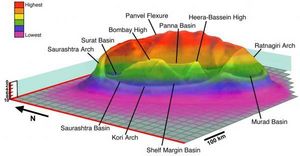
Three-dimensional
reconstruction of the submerged Shiva crater (~500 km diameter) at the
Mumbai Offshore Basin, western shelf of India from different
cross-sectional and geophysical data.
Sankar
Chatterjee of Texas Tech University and a team of researchers took a
close look at the massive Shiva basin, a submerged depression west of
India that is intensely mined for its oil and gas resources. Some
complex craters are among the most productive hydrocarbon sites on the
planet. Chatterjee will present his research at this month's Annual
Meeting of the Geological Society of America in Portland, Oregon.
"If we are right, this is the largest crater known on our
planet," Chatterjee said. "A bolide of this size, perhaps 40 kilometers
(25 miles) in diameter creates its own tectonics."
By contrast, the object that struck the Yucatan Peninsula, and
is commonly thought to have killed the dinosaurs was between 8 and 10
kilometers (5 and 6.2 miles) wide.
It's hard to imagine such a cataclysm. But if the team
is right, the Shiva impact vaporized Earth's crust at the point of
collision, leaving nothing but ultra-hot mantle material to well up in
its place. It is likely that the impact enhanced the nearby Deccan
Traps volcanic eruptions that covered much of western India. What's
more, the impact broke the Seychelles islands off of the Indian
tectonic plate, and sent them drifting toward Africa.
The geological evidence is dramatic. Shiva's outer rim forms a
rough, faulted ring some 500 kilometers in diameter, encircling the
central peak, known as the Bombay High, which would be 3 miles tall
from the ocean floor (about the height of Mount McKinley). Most of the
crater lies submerged on India's continental shelf, but where it does
come ashore it is marked by tall cliffs, active faults and hot springs.
The impact appears to have sheared or destroyed much of the
30-mile-thick granite layer in the western coast of India.
The team hopes to go India later this year to examine rocks
drill from the center of the putative crater for clues that would prove
the strange basin was formed by a gigantic impact.
"Rocks from the bottom of the crater will tell us the telltale
sign of the impact event from shattered and melted target rocks. And we
want to see if there are breccias, shocked quartz, and an iridium
anomaly," Chatterjee said. Asteroids are rich in iridium, and such
anomalies are thought of as the fingerprint of an impact.
NASA's intrepid Mars rover Opportunity has found yet another meteorite on the surface of the red planet.
Opportunity stumbled upon this new meteorite, dubbed "Shelter Island,"
less than three weeks after driving away from a larger meteorite that
the rover examined for six weeks.
The rover began its approach to the meteorite with a 92-foot
(28-meter) backwards drive on Oct. 1, the rover's 2,022nd day on Mars.
Opportunity and its twin rover Spirit - which is currently
embedded in a soft spot of soil called Troy - have been on the Martian
surface for more than five years.
Shelter Island is a pitted rock is about 18.5 inches
(47 cm) long. The meteorite was first detected in images taken two
Martian days earlier. (A Martian day is 24 hours and 40 minutes long.)
Two Martian days after its backward drive, Opportunity turned
around to face the meteorite. In the days that followed, it made a
final 3.3-foot (1-meter) move to put the rock within reach of the rover
robotic arm . Mission managers are now planning to use the arm to
contact the meteorite and make measurements.
Opportunity has driven about 2,300 feet (700 meters) since it
finished studying the meteorite called "Block Island" on Sept. 11,
2009.
Block Island weighs at least half a ton, is composed of iron
and nickel, and is likely too large to have plunged through the current
thin atmosphere of Mars without being obliterated upon impact,
scientists say.
Both meteorites have been found during Opportunity's trek to its next target, Endeavour Crater.
Opportunity also found a third meteorite, Heat Shield Rock, in 2004.
.
Comment: You can read a report of this sighting here
The Daily Mail
Fri, 16 Oct 2009 10:43 EDT
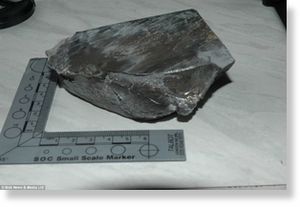
Experts believe the 4lb dark grey object had been orbiting Earth for at least a decade
Pensioner
Peter Welton was amazed when a piece of red-hot debris crashed through
his roof in July. Now experts have confirmed the object had travelled
hundreds of miles from outer space.
The 75-year-old had been in his bedroom when he heard a smash
and found the football-sized lump of extra terrestrial debris in the
loft of his home in Hull.
The great-grandfather said: 'It was a hell of a shock. If it
had landed in the street and hit anybody it would have killed them.'
As it was too hot to handle he brought it downstairs using oven gloves.
The 4lb dark grey object was removed by Humberside Police before being taken away by the Ministry of Defence for investigation.
Mr Welton and wife Mair, 62, then received a phone call from the RAF, who said the metal mass was most likely to be space junk. This could mean anything from part of a spacecraft to a piece of abandoned satellite.
RAF spokesman Squadron Leader Jeff Brock confirmed the finding, which
was the first the RAF's Defence Flying Complaints Investigation Team
had encountered.

Peter Welton, 76, was in his home is Hull when the space debris slammed into his loft
He
said: 'Following consultations with the European Space Agency and Nasa,
we are confident the object is more than likely space debris which was
orbiting in excess of a decade.
'This is the first bit of space debris that we have got our
hands on - we have never until this occasion had anything relating to
it at all.'
The DFCIT, based in Henlow, in Bedfordshire, investigates
complaints related to military flying. Experts initially thought the
object may have come from an aircraft.
However, its size and appearance was found to be 'entirely
consistent' with space junk, and its heavy mass meant it was more
likely to have been in a state of decaying orbit for a decade or more.
Russia (then the Soviet Union) put the first object into space
just 51 years ago - Sputnik One. Since then we have created a swarm of
perhaps tens of millions of items of space junk. The debris ranges in
size from paint flecks to defunct satellites.
The oldest piece of space junk still circling is the Vanguard
1 communications satellite that was launched by the U.S in 1958, but
stopped working in 1964.
Most hug close to the surface, 200-300 miles up in
low-earth-orbit, where they are a hazard to telescopes and the
astronauts on the International Space Station.
Most
debris will eventually burn up in the atmosphere, but larger objects
can reach the ground intact. Most have come down over the Pacific Ocean
or sparsely populated areas.
There has only been one recorded incident of a person being
hit by human-made space debris. In 1997, Lottie Williams from Oklahoma
was hit in the shoulder by a 5.1" piece of blackened metal. It was
later confirmed to be part of the a rocket fuel tank launched the year
before. Luckily she was not injured.
Despite narrowly escaping being hit, Mrs Mair said she was excited to hear the experts' findings.
'I think it's wonderful,' she said.
Mail's online video report on the event
Mark McNeil
The Hamilton Spectator
Fri, 16 Oct 2009 11:36 EDT
Scientists say a golf ball-sized rock that smashed through the
windshield of an SUV is a meteorite, possibly from a spectacular
fireball that streaked across the sky above Hamilton three weeks ago.
University of Western Ontario researchers confirmed the rock was a meteorite. It will be unveiled today at a media conference.
The fireball was captured on video Sept. 25 by a network of
cameras administered by Western that regularly watch the skies at
night. One of the cameras is located at McMaster University.
For the past two weeks, a search team headed by Phil
McCausland, a postdoctoral fellow at Western's Centre for Planetary
Science and Exploration, has been scouring the Grimsby area after
working out mathematical models that suggest the fireball crashed
there.
McCausland believes there are other meteorites on the ground
that have yet to be found because the meteor weighed as much as a tonne
when it hit Earth's atmosphere.
He returned to Grimsby yesterday with a search team of a few
people looking around the residential area where the meteorite was
discovered by a Grimsby resident.
"It was a very unusual rock, so the finder just held onto it,"
McCausland said. "They began to think it was a meteorite after the
media coverage happened."
He would not be specific about where the rock was located,
only that it was "just barely" within the 12-square-kilometre area
south of the town of Grimsby that searchers were focusing on.
Tests are being done to try to find out more about the 50-gram object.
The discovery, he said, has buoyed enthusiasm that other pieces
will be found and it will turn out to be a major find for the astronomy
community.
Meteorites are relatively common, but it is highly unusual to find one from a meteor videotaped coming through the atmosphere.
"You don't stop when you find one piece. You keep going," said
McCausland. "Finding one is confirmation that something came down here
and there are probably many others."
They are looking intensively in the area of the first find
because "meteorites don't care where they land. They could hit a house,
a roof. They can end up anywhere."
mmcneil@thespec.com
905-526-4687
Trak.in News/Asian News International
Mon, 19 Oct 2009 00:00 EDT
Washington - Reports indicate that hundreds of people in the
Netherlands and Germany have reported seeing a huge exploding fireball
in the sky on October 13.
According to a report in National Geographic News, amateur photographer Robert Mikaelyan captured the phenomenon on camera.
Mikaelyan managed to capture several shots of the fireball as
it swung low over the northern city of Groningen, Netherlands, and
began to break apart into smaller chunks.
"I suddenly saw a light in the sky coming fast and quickly got the pictures taken," Mikaelyan said.
A few seconds after the fireball had been sighted, witnesses heard a
sonic boom followed by low rumbles that rattled windows-signatures of a
high-altitude explosion.
The object was most likely a rogue space rock that
disintegrated shortly after hitting Earth's atmosphere, according to
experts, who speculate that pieces of the meteor may have landed in the
North Sea.
"Indeed it was a huge event," said Theo Jurriens, of the Kapteyn Astronomical Institute at the University of Groningen.
Earth is constantly being bombarded by smaller debris from comets, asteroids, and even other rocky planets in the solar system.
But a fireball of this size and brightness is likely seen anywhere in the world only every 20 to 25 years, according to Jurriens.
Comment: Every 20-25 years? Somebody's not been paying attention. These are from the past 3 weeks:
October 9th: Caught on camera: Meteorite streaks across New Mexico sky
October 5th: Video: Fireball lights up sky over Iceland
Septmber 28th: Cosmic shock and awe: Fireball explodes over Argentina
September 25th: Spectacular Fireball filmed over Canada
Cheng Chi-feng and Sofia Wu
Central News Agency
Mon, 19 Oct 2009 19:05 EDT
Kaohsiung - An amateur astronomer who discovered an asteroid earlier
this year presented a model of his new discovery to Kaohsiung Mayor
Chen Chu Monday to share it with all residents of the southern Taiwan
port city.
Tsai Yuan-sheng discovered the asteroid along with an
assistant at the Lulin Observatory on Yushan, also known as Jade
Mountain, March 20 and tentatively named it "Kaohsiung" after his
hometown.
In August, the International Astronomical Union's
Committee on Small Body Nomenclature (IAU's CSBN) -- an international
organization responsible for the naming of asteroids and comets --
formally approved the designation and gave Tsai's discovery a permanent
number "215080." It was the first asteroid discovered by an amateur
Taiwanese astronomy buff to have won international recognition.
The asteroid, located between Mars and Jupiter, is similar in
size to Kaohsiung International Airport. At perihelion, the closest
point to the sun in its orbit, the asteroid is 350 million kilometers
from the sun and at aphelion, its most distant point from the sun in
its orbit, it is about 450 million kilometers from the sun.
It takes about four years for the newly identified asteroid to complete its orbit around the sun.
Tsai and Lin Chi-sheng, an astronomical observation assistant
at Lulin Observatory, spotted the asteroid using highly advanced
digital equipment.
Tsai recalled that he first detected that the body could both
rotate around its own axis and circle the Sun and that its position
coordinates varied each day.
"I then took photos of the object consecutively for analytical
comparison and finally came to the conclusion that it was an asteroid
that had never been documented before," Tsai recalled.
According to Tsai, most larger asteroids have been discovered
and only small asteroids that cannot be detected with the naked eye are
still left to be spotted with highly sophisticated instruments.
Tsai, 40, began to develop his interest in observing the stars
while studying at a military preparatory school as a teenager. At the
time, he was required to stand guard at night, and the long hours with
nothing to do led him to fall in love with stargazing.
He later dropped out of the naval academy to pursue his hobby
more freely. He now often takes his wife and children high into the
mountains to observe the stars at night.
Tsai has documented 13 asteroids, but "Kaohsiung" is the only one to have been recognized by the IAU's CSBN.
"I was so jubilant to obtain international recognition of my
latest discovery and thus decided to name it 'Kaohsiung' to honor my
beloved homeland," Tsai said.
"I also want to share my happiness in discovering the new body
with all fellow Kaohsiung residents, " Tsai said at the asteroid model
presentation ceremony at the city's Gangho Elementary School.
For her part, Mayor Chen said the discovery of the asteroid
and its designation as "Kaohsiung" are not only the "pride of
Kaohsiung" but also the "pride of Taiwan." Noting that Tsai's
achievement has inspired a "star chasing" fad in the city, Chen said
the city government will step up efforts to promote astronomical
education and cultivate more talent in the field.
Chen said she has directed the city's Bureau of Education to
allocate NT$1 million (US$31,056) annually to help finance the
operations of the Gangho Elementary School's astronomy observatory.
She also proposed that an astronomy-themed science park be
established after Kaohsiung City and Kaohsiung County merge next year.
Tsai Ching-hua, director of the municipal education bureau,
said the discovery of the asteroid has set a good model for the city's
astronomy education and pledged to study the feasibility of setting up
an astronomy theme park in the new Kaohsiung municipality.
The
Orionid meteor shower is underway. Earth is passing through a stream of
dusty debris from Halley's Comet, and this is causing meteors to shoot
out of the constellation Orion. Earlier today, amateur astronomer
Jefferson Teng photographed an Orionid fireball over Shanghai, China.
"I woke up early in the morning to observe the shower through
my bedroom window," says Teng. "This one was quite bright considering
the light pollution in Shanghai."
Forecasters expect the shower to peak on Wednesday, Oct. 21st,
with dozens of meteors per hour. The best time to look is during the
dark hours before sunrise. For best results, get away from city lights,
but as Teng discovered, country darkness is not absolutely necessary.
Investigators Say Radiation Levels Normal
Scientists were investigating Monday whether a large crater found in a
meadow in northern Latvia had been created by meteorite. One expert
said it was likely a hoax.
Experts in the Baltic country rushed to the site after reports
that a metorite-like object had crashed late Sunday in the Mazsalaca
region near the Estonian border.
Uldis Nulle, a scientist at the Latvian Environment, Geology
and Meteorology Center, said his first impression after observing the
site late Sunday was that the 27-foot (nine-meter) wide and nine foot
(three-meter) deep crater had been caused by a meteorite. He said there
was smoke coming out of the hole when he arrived.
However,
Dainis Ozols, a nature conservationist who examined the hole in
daylight on Monday, said it appeared to be a hoax. Ozols said he
believes someone dug the hole and tried to make it look like a
meteorite crater by burning some pyrotechnic compound at the bottom. He
added he would analyze some samples taken from the site.
When asked about Ozols' theory, Nulle refused to comment, saying he needed more time to make tests at the site.
Inga Vetere of the Fire and Rescue Service said they received a
call about the alleged meteorite on Sunday evening from an eyewitness.
She said a military unit was dispatched to the site and found that
radiation levels were normal. There were no injures.
Experts outside Latvia said it would be unusual for such a
large meteorite to hit the Earth. The planet is constantly bombarded
with objects from outer space, but most burn up in the atmosphere and
never reach the surface.
In 2007, a meteorite crashed near Lake Titicaca in Peru, causing a
crater about 40 feet (12 meters) wide and 15 feet (five meters) deep.
Asta
Pellinen-Wannberg, a meteorite expert at the Swedish Institute of Space
Research, said she didn't know the details of the Latvian incident, but
that a rock would have to be at least three feet (one meter) in
diameter to create a hole that size.
Henning Haack, a lecturer at Copenhagen University's
Geological Museum said more information was needed to confirm that the
crater was indeed caused by a meteorite.
"With all these kind of reports we get there always is a pretty large margin of error," he said.
A fiery object struck farmland creating a large crater near a small town in northern Latvia.
No-one was injured in the incident and geologists are now studying the object, which may be a meteorite.
Locals claimed the object fell near a farmhouse on the outskirts of Mazsalaca town in the district of Valmiera last night.
It created a crater which measured 50 feet across and 16 feet deep.
A witness who claimed to have seen the incident described the
'meteorite' as making a noise similar to the one of an aircraft flying
at a low altitude.
ldis Nulle, a scientist at the Latvian Environment, Geology
and Meteorology Center, said there was smoke coming out of the crater
when he arrived at the crash site late Sunday in the Mazsalaca region
near the Estonian border.
'My first impression is that, yes, it was a meteorite,' he
said. 'All the evidence suggests this when compared to pictures of real
meteorite craters.'
He
said the rim of the crater was slightly raised and there was a
black-grayish scar at the bottom - both signs of a meteorite impact.
Experts outside Latvia said it was unusual for such a large
meteorite to hit the Earth. The planet is constantly bombarded with
objects from outer space, but most burn up in the atmosphere and never
reach the surface.
In 2007, a meteorite crashed near Lake Titicaca in Peru, causing a
crater about 40 feet (12 metres) wide and 15 feet (5 metres) deep.
Asta Pellinen-Wannberg, a meteorite expert at the Swedish
Institute of Space Research, said she didn't know the details of the
Latvian incident, but that a rock would have to be at least three feet
(one metre) in diameter to create a hole that size.
Henning Haack, a lecturer at Copenhagen University's
Geological Museum said more information was needed to confirm that the
crater was indeed caused by a meteorite.
'With all these kind of reports we get there always is a pretty large margin of error,' he said.
In Latvia, Nulle said a group of experts would examine the
crater today and bring rock samples back to the capital, Riga, for
testing.
Nulle rushed to the site after people in the area reported seeing a fiery object falling from the sky.
Inga Vetere of the Fire and Rescue Service said a military unit
has tested the site and found that radiation levels are normal. There
were no injures.
She said police have cordoned off the area to prevent souvenir hunters from taking away the soil.
'We are not finally sure that this is a meteorite,' she told
Itar-Tass news agency. 'Eyewitnesses said something fell from the sky
and fire started.'
Russian blogs posted YouTube video that claimed to show the
remains of the meteor burning brightly shortly after the crash, but the
validity of the video has not yet been confirmed.
No one was injured after a meteorite fell near a small town in northern Latvia on Sunday, local Latvian media reported.
According to media reports, the meteorite fell near a residential house
on the outskirts of Mazsalaca town in the Valmiera district of Latvia,
leaving a crater of some 20 meters (66 feet) in diameter and 10 meters
(33 feet) deep.
A spokesperson for the Latvian State Fire and Rescue Service
said that rescuers and soldiers immediately cordoned off the territory,
however, it is still not clear whether it was an asteroid or a space
satellite.
"The territory has been immediately cordoned off as we still
do not know what fell down from the sky. According to preliminary
information, it was a meteorite. However, it is possible that it was a
[space] satellite or its fragment. A radioactive contamination is also
possible," she said.
A witness, who saw the object falling from the sky and leaving
a burning trace behind, said it was making a noise similar to the one
of an aircraft flying at a low altitude.
On March 2 this year, a 35-meter asteroid came within
72,000 kilometers of Earth. The size of the space rock was comparable
to the asteroid that caused the Tunguska disaster, but there was no
danger of a collision.
On June 30, 1908, an explosion equivalent to between 5 and 30
megatons of TNT occurred near the Podkamennaya Tunguska River in a
remote region of Russia's Siberia.
The Tunguska blast flattened 80 million trees, destroying an area of around 2,150 sq km (830 sq miles).
It is assumed that a huge meteorite had hit the area, although research expeditions failed to find an obvious crater.
Comment: Update: This incident appears to have been staged
'Meteorite' that landed in Latvia is a hoax, experts say
Tony Halpin
Times Online
Mon, 26 Oct 2009 18:09 EDT
It was the student prank that apparently fell to earth after experts
dismissed a meteorite crash in Latvia as an elaborate hoax today.
Dramatic video of a fireball at the bottom of an impact crater
on farmland outside the town of Mazsalaca was shown all over the world,
taken by a group of film students who said that they had heard the
meteor strike.
But experts who examined the scene were less star-struck. Dr
Ilgonis Vilks, chairman of the scientific council at the University of
Latvia's Institute of Astronomy, said: "It's a fake. It's very
disappointing, I was full of hope coming here, but I am certain it is
not a meteorite."
Setting aside the astronomical odds of a group of film
students happening to be at the ready when a meteorite hits the Earth,
Dr Vilks said that several other tell-tale signs had given the game
away.
There was green grass inside the crater despite the
intense heat supposedly generated by the meteorite. The impact crater,
initially reported as 10 metres deep, was actually only 3 metres
including a lip of soil a metre high around the hole.
Dr Vilks said that there was neither ejected material from the
hole nor any fragments of meteorite on the surrounding land. Finally,
there was the flaming "meteorite" itself.
"It's a ball of clay that was burning. We took some samples
from it and geologists from the university will examine it," Dr Vilks
said. "There was a small blast heard by local people but this was not
strong enough to create the crater and there's only a small area in the
hole that is burnt."
Dainis Ozols, a nature conservationist who also examined the
scene, said that he believed somebody had dug the hole and burnt a
pyrotechnic compound at the bottom to make it appear like a meteorite
crater.
The alert was first raised on Sunday evening by Ancis
Steinbergs, who said that he had been out filming for a university
project with his girlfriend and a fellow undergraduate. He was refusing
to answer his telephone tonight to answer questions about the experts'
assessments.
He had earlier told The Times that the trio had
heard a loud roaring sound "like an airplane falling from the sky"
seconds before the alleged meteorite hit the field behind some trees.
Mr Steinbergs said: "We saw something burning in the sky like
a ball and it was moving very fast and then there was a loud noise. We
went to find it and there was this big hole with fire burning in it.
"It was so hot that the camera was misting up. We thought it was really dangerous because there might be an explosion."
Video taken by the group showed them approaching the lip of the
crater and filming the glowing hot "meteor" at the bottom as they
talked excitedly among themselves. The clip bears similarities in style
to the Blair Witch Project, a 1999 film based on supposedly "amateur" footage shot by three missing film students.
Mr Steinbergs said that he called Latvia's Fire and Rescue Service.
Inga Vetere, a spokeswoman, said that fire crews had attended the site
and cordoned it off. Tests had recorded normal levels of radiation and
nobody had been hurt.
Local news agencies reported that the landowner, Larisa
Gerasimova, had been quick to capitalise on interest surrounding the
crater and had begun to charge curious visitors $2 to view the site.
Earth is bombarded by thousands of small celestial objects
every year but most burn up in the atmosphere before they reach the
surface. The last recorded meteorite strike on land was in 2007 near
Lake Titicaca in Peru, when it left a crater 12 metres wide (40ft) and
five metres deep (15ft).
David Shiga
New Scientist
Tue, 27 Oct 2009 00:04 EDT
As the US government ponders a strategy to deal with threatening
asteroids, a dramatic explosion over Indonesia has underscored how blind we still are to hurtling space rocks.
On 8 October an asteroid detonated high in the atmosphere above South
Sulawesi, Indonesia, releasing about as much energy as 50,000 tons of
TNT, according to a NASA estimate released on Friday. That's about
three times more powerful than the atomic bomb that levelled Hiroshima,
making it one of the largest asteroid explosions ever observed.
However, the blast caused no damage on the ground because of
the high altitude, 15 to 20 kilometres above Earth's surface, says
astronomer Peter Brown of the University of Western Ontario (UWO),
Canada.
Brown and Elizabeth Silber, also of UWO, estimated the
explosion energy from infrasound waves that rippled halfway around the
world and were recorded by an international network of instruments that
listens for nuclear explosions.
The explosion was heard by witnesses in Indonesia. Video images of the sky following the event show a dust trail characteristic of an exploding asteroid.
Sudden impact
The amount of energy released suggests the object was about 10 metres
across, the researchers say. Such objects are thought to hit Earth
about once per decade.
No telescope spotted the asteroid ahead of its impact.
That is not surprising, given that only a tiny fraction of asteroids
smaller than 100 metres across have been catalogued, says Tim Spahr,
director of the Minor Planet Center in Cambridge, Massachusetts. Yet
objects as small as 20 or 30 metres across may be capable of doing
damage on the ground, he says.
"If you want to find the smallest objects you have to build
more, larger telescopes," says Spahr. "A survey that finds all of the
20-metre objects will cost probably multiple billions of dollars."
The White House must develop a policy to address the asteroid
hazard by October 2010 under a deadline imposed by Congress. It is
likely to be influenced by a report from the National Research Council
on the asteroid problem, which is expected by year's end.
Tom Chivers
Telegraph.co.uk
Tue, 27 Oct 2009 07:21 EDT
An asteroid that exploded in the Earth's atmosphere with the energy of
three Hiroshima bombs this month has reignited fears about our planet's
defences against space impacts.
On 8 October, the rock crashed into the atmosphere above South Sulawesi, Indonesia. The blast was heard by monitoring stations 10,000 miles away, according to a report by scientists at the University of Western Ontario.
Scientists are concerned that it was not spotted by any
telescopes, and that had it been larger it could have caused a
disaster.
The asteroid, estimated to have been around 10 metres
(30ft) across, hit the atmosphere at an estimated 45,000mph. The sudden
deceleration caused it to heat up rapidly and explode with the force of
50,000 tons of TNT.
Luckily, due to the height of the explosion - estimated at
between 15 and 20 km (nine to 12 miles) above sea level - no damage was
caused on the ground.
However, if the object had been slightly larger - 20 to 30 metres (60
to 90ft) across - it could easily have caused extensive damage and loss
of life, say researchers.
Very few objects smaller than 100 meters (300ft) across have been spotted and catalogued by astronomers.
Tim Spahr, director of the Minor Planet Center in Cambridge,
Massachusetts, warned that it was inevitable that minor asteroids would
go unnoticed. He said: "If you want to find the smallest objects you
have to build more, larger telescopes.
"A survey that finds all of the 20-metre objects will cost probably multiple billions of dollars."
The fireball was spotted by locals in Indonesia, and a YouTube
video taken that day "appears to show a large dust cloud consistent
with a bright, daylight fireball", according to the Ontario
researchers.
An asteroid or comet fragment around 60 meters across is
believed to have been behind the Tunguska Event, a powerful explosion
that took place over Russia in 1908. The blast has been estimated at
equivalent to 10-15 million tons of TNT - enough to destroy a large
city.
The White House is to develop a policy on the space object impact threat by October next year.
Spaceweather.com
Thu, 29 Oct 2009 10:07 EDT
Picture this: A 10-meter wide asteroid hits Earth and explodes in the atmosphere with the energy of a small atomic bomb.
Frightened by thunderous sounds and shaking walls, people rush out of
their homes, thinking that an earthquake is in progress. All they see
is a twisting trail of debris in the mid-day sky.
This really happened on Oct. 8th around 11 am local time in the coastal town of Bone, Indonesia. The Earth-shaking blast received remarkably little coverage in Western press,
but meteor scientists have given it their full attention. "The
explosion triggered infrasound sensors of the Comprehensive
Nuclear-Test-Ban Treaty Organization (CTBTO) more than 10,000 km away,"
report researchers Elizabeth Silber and Peter Brown of the Univ. of
Western Ontario in an Oct. 19th press release. Their analysis of the
infrasound data revealed an explosion at coordinates 4.5S, 120E (close
to Bone) with a yield of about 50 kton of TNT. That's two to three times more powerful than World War II-era atomic bombs.
The asteroid that caused the blast was not known before it hit and took
astronomers completely by surprise. According to statistical studies of
the near-Earth asteroid population, such objects are expected to
collide with Earth on average every 2 to 12 years. "Follow-on
observations from other instruments or ground recovery efforts would be
very valuable in further refining this unique event," say Silber and
Brown.
Comment: We
suspect that about 30 or 40 years ago word came down from higher up not
to report any more anomalous observations in the skies from the public,
coincident with the UFO cover-up. About two years ago spaceweather.com
also reported a huge fireball seen over Portugal, Spain and France. A
Lexis-Nexis search of all English language news produced no mention of
it in the mainstream media in the following days. This article appeared in El Mundo.
Just this week the internet was ablaze with reports about a fiery meteorite filmed in a field in Latvia. One of the newspapers
carrying this story completely changed its reporting of the event
within hours of breaking it, deciding that it was a hoax because the
impact crater was just "too tidy." We suspect this event was a genuine meteor impact, but that damage control went into overdrive to cover it up.
Remember what Victor Clube wrote:
After the Krakatao volcano erupted (in Indonesia no less)
[I]t is perhaps not so widely appreciated that the witchhunts and
political upheavals of the seventeenth century in England - which
modern authorities sometimes look upon as archetypal in respect of the
circumstances which generally give rise to revolution - were directly
attributed by contemporaries to the unsettling effects of an
(observed) celestial circulation: these contemporaries speak of
celestial signs which were deliveries of "God's providence" and which
were evidently mediated by "God's revolution".
the entire island converted to Islam. One can only imagine what a
similar comet or asteroid event would do to a country such as the US.
What better way to condition them to be obedient slaves by frightening
them with controlled, preemptive, color-coded "terrorism" and blowing
up a few skyscrapers.
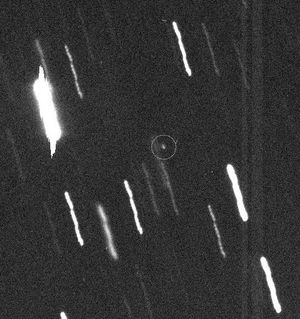
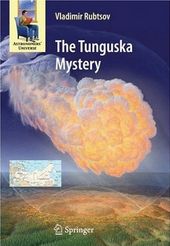
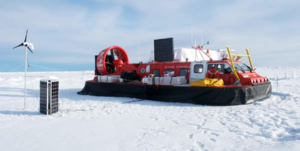

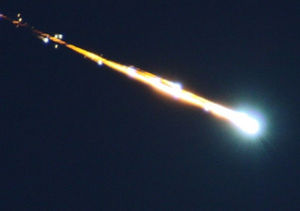
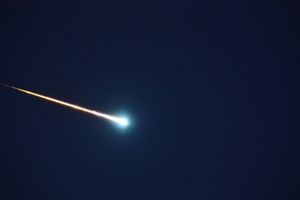
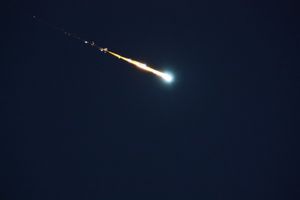
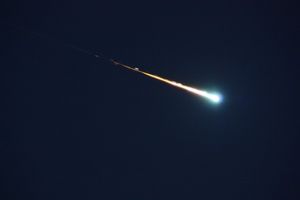
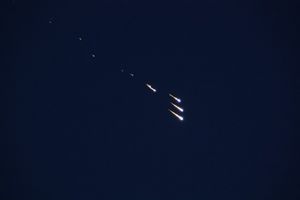
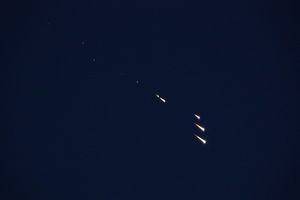
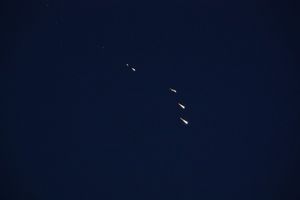
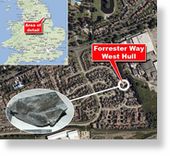

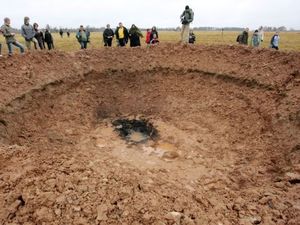
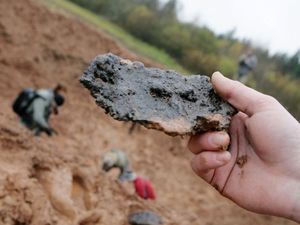
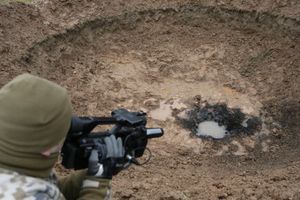
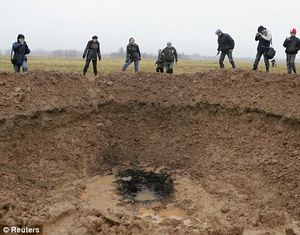
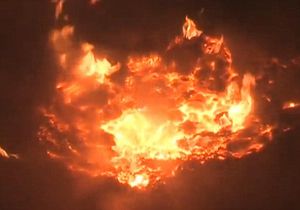
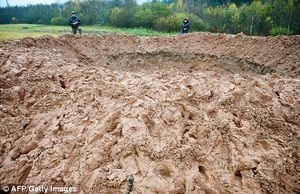
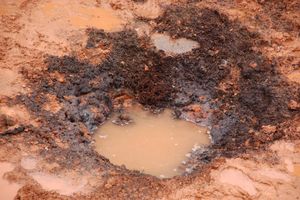
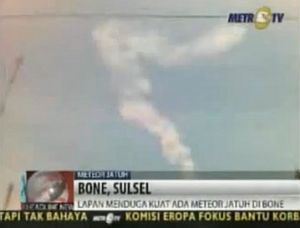
No comments:
Post a Comment